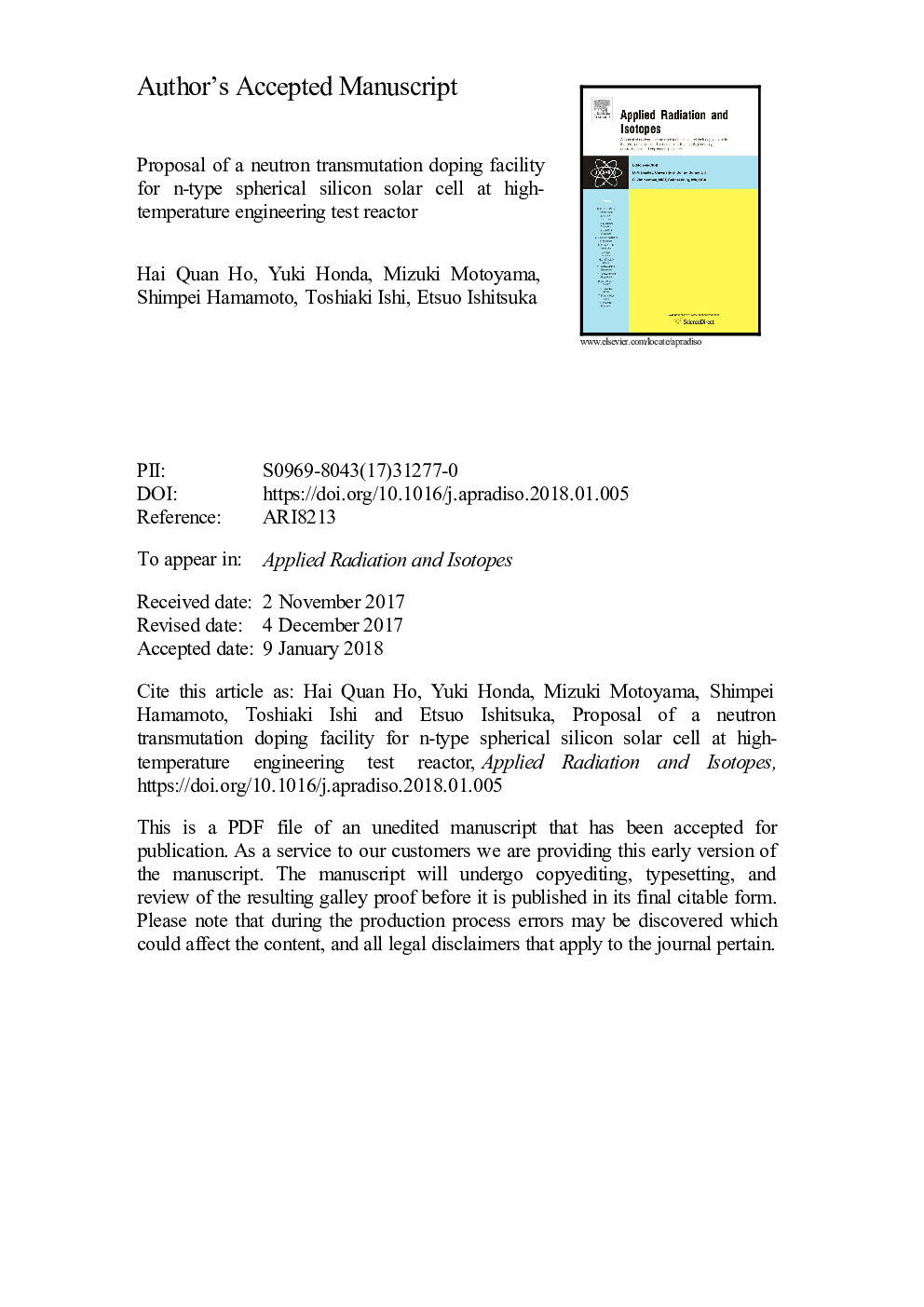| Article ID | Journal | Published Year | Pages | File Type |
|---|---|---|---|---|
| 8208593 | Applied Radiation and Isotopes | 2018 | 28 Pages |
Abstract
The p-type spherical silicon solar cell is a candidate for future solar energy with low fabrication cost, however, its conversion efficiency is only about 10%. The conversion efficiency of a silicon solar cell can be increased by using n-type silicon semiconductor as a substrate. This study proposed a new method of neutron transmutation doping silicon (NTD-Si) for producing the n-type spherical solar cell, in which the Si-particles are irradiated directly instead of the cylinder Si-ingot as in the conventional NTD-Si. By using a 'screw', an identical resistivity could be achieved for the Si-particles without a complicated procedure as in the NTD with Si-ingot. Also, the reactivity and neutron flux swing could be kept to a minimum because of the continuous irradiation of the Si-particles. A high temperature engineering test reactor (HTTR), which is located in Japan, was used as a reference reactor in this study. Neutronic calculations showed that the HTTR has a capability to produce about 40 t/EFPY of 10 Ω cm resistivity Si-particles for fabrication of the n-type spherical solar cell.
Related Topics
Physical Sciences and Engineering
Physics and Astronomy
Radiation
Authors
Hai Quan Ho, Yuki Honda, Mizuki Motoyama, Shimpei Hamamoto, Toshiaki Ishii, Etsuo Ishitsuka,
